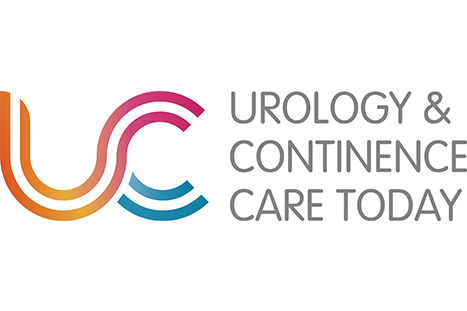References
Brown JE, Handforth C, Compston JE (2020) Guidance for the assessment and management of prostate cancer treatment-induced bone loss. A consensus position statement from an expert group. J Bone Oncol 25: 100311
Edmunds K, Tuffaha H, Scuffham P, Galvão DA, Newton RU (2020) The role of GPN exercise in the management of adverse effects of androgen deprivation therapy for prostate cancer: a rapid review. Support Care Cancer 28(12): 5661–71
Elkins GR, Kendrick C, Koep L (2014) Hypnotic relaxation therapy for treatment of hot flashes following prostate cancer surgery: a case study. Int J Clin Exp Hypn 62(3): 251–9
Ng, E, Woo HH, Turner S, et al (2012) The influence of testosterone suppression and recovery on sexual function in men with prostate cancer: observations from a prospective study in men undergoing Intermittent androgen suppression. J Urol 187(6): 2162-6
Meng MV, Grossfield GD, Sadetsky N, et al (2022) Contemporary patterns of Androgen deprivation therapy use in newly diagnosed prostate cancer. Urology 60(3 Suppl 1): 7–11
Mitsiades N, Correa D, Gross CP, Hurria A, Solvin SF (2008) Cognitive effects problems in patients on androgen deprivation therapy in older adults. Semin Oncol 35: 569–81
National Institute for Health and Care Excellence (2019) Prostate cancer: diagnosis and management. Last updated 2021. NICE, London. Available online: www.nice.org.uk/guidance/ng131/chapter/recommendations Prostate Cancer UK (2022) Facts and figures. Available online: https://prostatecanceruk.org/prostate-information/about-prostate-cancer
Reale S, Turner RR, Sutton E, et al (2021) Embedding supervised exercise training for men on androgen deprivation therapy into standard prostate cancer care: a feasibility and acceptability study (the STAMINA trial). Sci Rep 11: 12470
Segal R, Zwaal C, Green E, et al (2017) Exercise for people with cancer: a clinical practice guideline. Curr Oncol 24: 40–6
Shim M, Bang WJ, Oh CY, Lee YS, Cho JS (2022) Androgen deprivation therapy and risk of cognitive dysfunction in men with prostate cancer: is there a possible link? Prostate Int 10(1): 68–74
Ussing A, Mikkelsen MLK, Villumsen BR, et al (2022) Supervised exercise therapy compared with no exercise therapy to reverse debilitating effects of androgen deprivation therapy in patients with prostate cancer: a systematic review and meta-analysis. Prostate Cancer Prostatic Dis 25: 491–506
Wassersug RJ, Walker LM, Robinson JW (2021) Androgen deprivation therapy: An essential guide for prostate cancer patients and their loved ones. 2nd edn
Wibowo E, Wassersug RJ, Robinson JW, et al (2019) How are patients with prostate cancer managing androgen deprivation therapy side effects? Clin Genitourin Cancer 17(3): e408–e419
Wu LM, Dienfenbach MA, Gordon WA, Cantor JB, Cherrier MM (2013) Cognitive problems in patients on androgen deprivation therapy: a qualitive pilot study. Urol Oncol 31: 1533–38
Edmunds K, Tuffaha H, Scuffham P, Galvão DA, Newton RU (2020) The role of GPN exercise in the management of adverse effects of androgen deprivation therapy for prostate cancer: a rapid review. Support Care Cancer 28(12): 5661–71
Elkins GR, Kendrick C, Koep L (2014) Hypnotic relaxation therapy for treatment of hot flashes following prostate cancer surgery: a case study. Int J Clin Exp Hypn 62(3): 251–9
Ng, E, Woo HH, Turner S, et al (2012) The influence of testosterone suppression and recovery on sexual function in men with prostate cancer: observations from a prospective study in men undergoing Intermittent androgen suppression. J Urol 187(6): 2162-6
Meng MV, Grossfield GD, Sadetsky N, et al (2022) Contemporary patterns of Androgen deprivation therapy use in newly diagnosed prostate cancer. Urology 60(3 Suppl 1): 7–11
Mitsiades N, Correa D, Gross CP, Hurria A, Solvin SF (2008) Cognitive effects problems in patients on androgen deprivation therapy in older adults. Semin Oncol 35: 569–81
National Institute for Health and Care Excellence (2019) Prostate cancer: diagnosis and management. Last updated 2021. NICE, London. Available online: www.nice.org.uk/guidance/ng131/chapter/recommendations Prostate Cancer UK (2022) Facts and figures. Available online: https://prostatecanceruk.org/prostate-information/about-prostate-cancer
Reale S, Turner RR, Sutton E, et al (2021) Embedding supervised exercise training for men on androgen deprivation therapy into standard prostate cancer care: a feasibility and acceptability study (the STAMINA trial). Sci Rep 11: 12470
Segal R, Zwaal C, Green E, et al (2017) Exercise for people with cancer: a clinical practice guideline. Curr Oncol 24: 40–6
Shim M, Bang WJ, Oh CY, Lee YS, Cho JS (2022) Androgen deprivation therapy and risk of cognitive dysfunction in men with prostate cancer: is there a possible link? Prostate Int 10(1): 68–74
Ussing A, Mikkelsen MLK, Villumsen BR, et al (2022) Supervised exercise therapy compared with no exercise therapy to reverse debilitating effects of androgen deprivation therapy in patients with prostate cancer: a systematic review and meta-analysis. Prostate Cancer Prostatic Dis 25: 491–506
Wassersug RJ, Walker LM, Robinson JW (2021) Androgen deprivation therapy: An essential guide for prostate cancer patients and their loved ones. 2nd edn
Wibowo E, Wassersug RJ, Robinson JW, et al (2019) How are patients with prostate cancer managing androgen deprivation therapy side effects? Clin Genitourin Cancer 17(3): e408–e419
Wu LM, Dienfenbach MA, Gordon WA, Cantor JB, Cherrier MM (2013) Cognitive problems in patients on androgen deprivation therapy: a qualitive pilot study. Urol Oncol 31: 1533–38
This piece was first published in the Journal of General Practice Nursing. To cite this article use: O’Sullivan L (2022) Let’s educate men about the seen and unseen side-effects of ADT. J Gen Pract Nurs 8(4): 16–1



